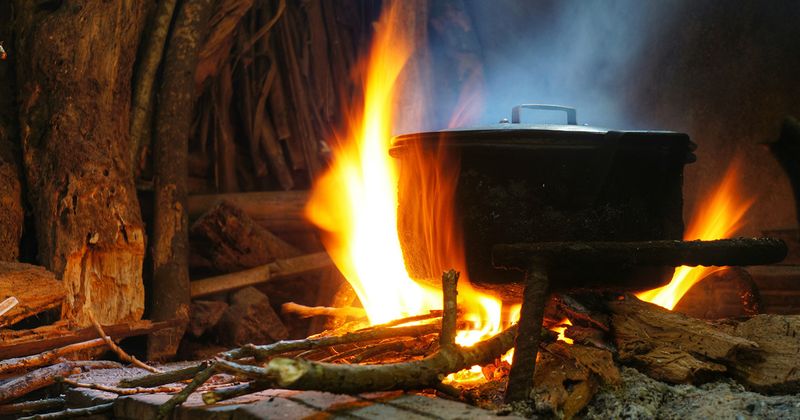Exposure to solid fuel for cooking linked to lung cancer mortality risk
Click Here to Manage Email Alerts
Exposure to household air pollutants, especially solid fuel, appeared linked to lung cancer death among individuals who have never smoked, according to a study published in American Journal of Respiratory and Critical Care Medicine.

“Since lung cancer patients can present with a wide range of clinical symptoms before a proper diagnosis is made, ranging from asymptomatic, some common chest symptoms (eg, cough or hemoptysis) or systemic symptoms (eg, lethargy or weight loss), to atypical presentations often due to metastasis, it remains a challenge for clinicians to make a timelier diagnosis,” Elvin S. Cheng, PhD, MPH, BScMed, MBBS, research scientist from the Daffodil Centre at the University of Sydney, told Healio. “As early detection would allow better prospect of curative treatments, a clinical history of strong exposure to solid fuels could be considered as one of the criteria for early diagnostic or screening intervention (using low-dose CT scan) for lung cancer in the never-smoking populations.”

In a prospective cohort study, Cheng and colleagues analyzed 323,794 individuals (mean age, 51.5 years; 89% women) who never smoked from the China Kadoorie Biobank between 2004 and 2008, to determine if household air pollution and secondhand tobacco smoking were related to death due to lung cancer.
Researchers used participants’ reports of domestic fuel use — including whether they used gas, coal, wood, electricity or other fuel and how often — to calculate the total time of household air pollution exposure. They assessed secondhand smoke exposure according to the participants’ exposure at home, the workplace or in public.
In order to find associations, researchers used Cox regression and adjusted for confounders.
Of the total cohort, 84.8% reported ever exposure to household air pollutants and 91% reported ever exposure to secondhand smoke, with 78.2% exposed to both and 2.4% to neither.
Researchers additionally observed that the most frequently reported household air pollutant was solid fuel use for cooking at 67%, followed by a “coal-smoky home” at 27%, which researchers defined as visible or smellable air pollution from use of coal burning for heating.
Individuals were studied until Dec. 31, 2016, with a median follow-up of 10.2 years. In that time, 979 individuals from the cohort died of lung cancer.
Although researchers did not find a significant association between household air pollution ever exposure and lung cancer mortality, they did find a significant log-linear positive relationship between cumulative duration of exposure and lung cancer death. Researchers observed that per every 5-year increment of exposure duration, risk for death due to lung cancer increased by 4% (HR = 1.04; 95% CI, 1.01-1.06).
Researchers also found that the highest risk for lung cancer mortality occurred among individuals who experienced 40.1 years to 50 years of exposure to household air pollution (HR = 1.53; 95% CI, 1.13-2.07). The hazard ratio for individuals who experienced more than 50 years of exposure was 1.27 (95% CI, 0.93-1.73).

The latter hazard ratio was likely lower due to survivor bias, as people who used solid fuels for a long time tended to be elderly but healthy enough to survive without major disease, according to study researcher Peter Ka Hung Chan, DPhil, MSc, BSc, research fellow from the Oxford British Heart Foundation Centre of Research Excellence at the University of Oxford.
“Elderly who were already affected by the exposure would have a lower chance of being included in the study,” Chan told Healio.
When looking at individual factors such as sex, age, area (urban vs. rural), past history of respiratory disease and self-rated poor health in subgroup analysis of household air pollution exposure and lung cancer death, researchers observed no significant differences between the groups, except for a borderline significant difference between “poor” health (HR = 0.97; 95% CI, 0.91-1.04) and “not poor” health (HR = 1.05; 95% CI, 1.02-1.08; P for heterogeneity = .047).
In terms of secondhand tobacco smoking and lung cancer mortality, researchers found no significant association between the two factors, which Chan said is “consistent with the more recent prospective studies (as opposed to earlier retrospective studies).”
“We need more large prospective studies with more accurate assessment of solid fuel use and secondhand smoke exposure, examining not only risk of lung cancer death but also risk of developing newly diagnosed lung cancer,” Chan told Healio. “For example, we could combine questionnaire data with direct measurement of harmful chemicals in solid fuel and secondhand smoke within a prospective study, so we can potentially tease out the specific pollutants that are most relevant to lung cancer risk.”
The populations in most developed countries have seen an increase in the proportion of never-smokers due to stringent tobacco control, according to Cheng.
“However, the etiology of lung cancer among never-smokers is still largely unknown,” Cheng told Healio. “Research to study the major risk factors for lung cancer unrelated to tobacco smoke is greatly warranted to combat the impact of lung cancer as the leading cause of cancer mortality globally.”
Chan also told Healio about how these findings impact clinicians.
“Generally, I’d hope clinicians advise their patients to avoid solid fuel or secondhand smoke — eg, don’t stay too close to a barbecue for too long,” Chan said. “Often patients would get respiratory symptoms well before any other respiratory diseases like lung cancer, and those are warning signals about the potential harm on their lungs.”
This study by Cheng and colleagues adds to the literature indicating that exposure to household air pollutants needs to be studied further and global organizations need to take action on this issue to improve public health, according to an accompanying editorial by Om P. Kurmi, PhD, associate professor in epidemiology and health care research at Coventry University, U.K.
“It is too early to understand the full spectrum of diseases associated with exposure to HAP,” Kurmi wrote. “Some of these large, prospective cohorts have tried to provide better estimates; however, they often have raised some serious public health concerns, which suggests that we need to develop policies for prevention rather than waiting to understand the full spectrum of diseases and mechanisms of how some of the HAP and SHS act. Cardiorespiratory diseases and lung cancer control should be targeted to improve global health. This is important if we are serious about reducing one-third of premature mortality from noncommunicable diseases by 2030, one of the key goals of the United Nations Sustainable Development Goals.”
For more information:
Elvin S. Cheng, PhD, MPH, BScMed, MBBS, can be reached at elvin.cheng@sydney.edu.au.
Peter Ka Hung Chan, DPhil, MSc, BSc, can be reached at kahung.chan@ndph.ox.ac.uk.
Reference:
Kurmi OP. Am J Respir Crit Care Med. 2022; doi:10.1164/rccm.202209-1641ED.
